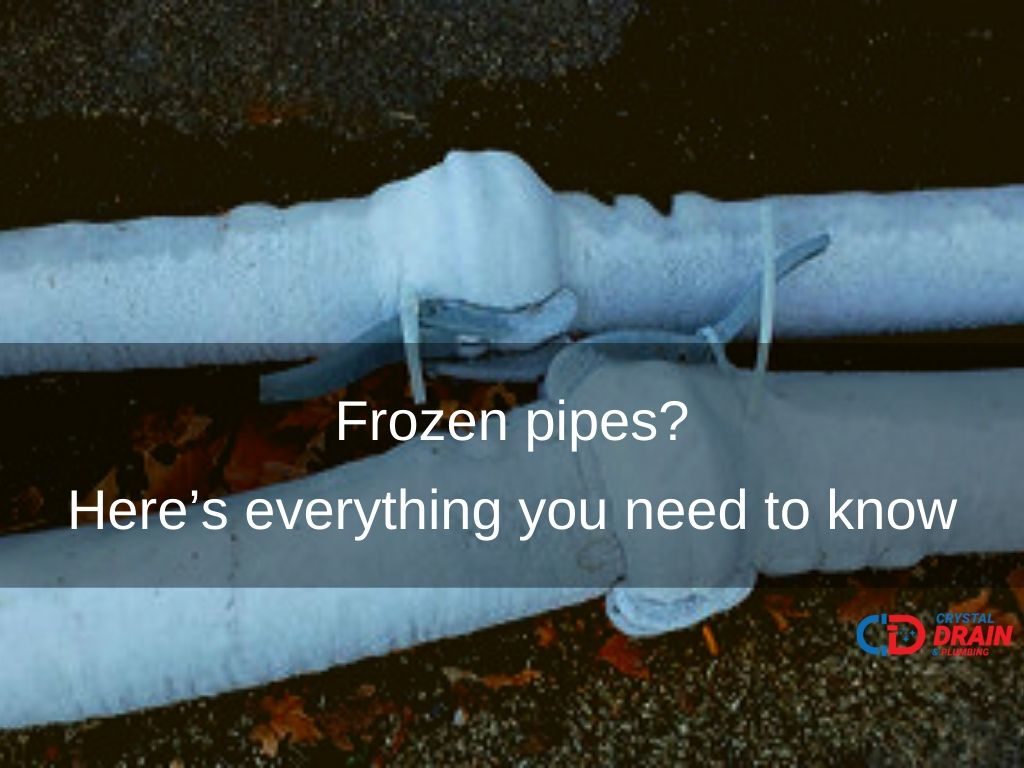Canada’s freezing temperatures in the long winter months can cause a multitude of problems.However, frozen pipes is one concern that all landlords should be aware of. Read on to find out how to prevent and thaw frozen pipes!
Why Frozen Pipes Are Dangerous
Frozen pipes are not only a major inconvenience to you, but they can also cause significant damage to your property.
- Lack Of Running Water – When your pipes become frozen, your access to running water cuts off. This interferes with your ability to do simple, everyday tasks such as brushing your teeth or flushing the toilet.
- Pipes Can Potentially Burst – Water expands when it freezes, which adds pressure onto the pipe. This pressure can cause a tiny leak or crack, bursting the pipe and unleashing water. Make sure to shut off the main water line if your pipes do burst.
Pipes located along exterior walls, in attics, and basements are more vulnerable to freezing compared to others. These pipes do not have the same amount of heat or insulation to protect them from the cold temperatures.
Signs Of Frozen Pipes
To identify and locate frozen pipes, there are several clues:
- Frost On Pipes – Any visible pipes, such as the ones under sinks. You may be able to see the pipe coated in frost.
- Faucets Won’t Flow – If your faucets don’t flow (or only a trickle comes out) and your toilets don’t refill after flushing, frozen pipes may be the cause of it.
- Strange Smells – If an odd smell is coming from a faucet or drain, this means the pipe is either partially or fully blocked up. The only way the odor can escape is by going back up the pipe.
Thawing The Pipes
Depending on the location of the pipe and your knowledge, you can either attempt to do it yourself or contact a professional plumber to do the job for you. It’s important to thaw the pipe immediately to prevent bursting and further damage. If you choose to do this yourself, here is what you need to do:
- Locate Frozen Pipe – Frozen pipes will usually have frost or a bulge. If the blockage is in an accessible area, you will have more options to thaw the pipe.
- Turn On Faucet – Switch on both the hot and cold handles of the faucet. This helps to relieve pressure in the system and allows the water to escape once you begin to thaw.
- Thawing Exposed Pipes – Start to thaw in the area closest to the faucet, then work your way down. This ensures that the melting ice and steam can escape through the open faucet. To thaw pipes, apply heat until the water escaping from the faucet returns to full strength. You can try using a hair dryer, heat lamp, portable space heater, hot towel or electrical heating tape. Never use an open flame to thaw the pipes as this can damage the pipes and start a fire.
- Thawing Inaccessible Pipes – You can choose to turn the heat up in the property, locate the frozen pipe and use an infrared lamp on the wall, or cut out of a section of the drywall to access it.
How To Prevent Frozen Pipes
If your pipes aren’t frozen and you’re reading just as a precaution, here are some things you can do to prevent frozen pipes in the future:
- Locate Main Water Shut-Off Valve – In case your pipes do burst, it’s important to know where your main water line valve is and how to shut it off if ever needed.
- Insulate Pipes – Purchasing foam pipe covers from building supply or home improvement stores can be useful and helpful to insulate the pipes. Pay close attention to the ones near outside walls, in crawl spaces, the attic and the garage.
- Seal Holes and Cracks – Prevent cold air from getting in through windows, doors, electrical wiring, dryer vents and pipes. Keep garage doors closed if water lines are in the garage.
- Circulate Heat – Open kitchen, bathroom and laundry cabinet doors to let warm air circulate around plumbing.
- Remove Exterior Hoses – Shut off interior valves that feed water to equipment outdoors. Outdoor faucets are the first ones to freeze. Unscrew hoses and lets the taps drain. You won’t be needing to water plants in the winter.
- Keep Heating On – If you plan to be away from your home, keep the thermostat set to no lower than 13°C day and night.
- Allow Faucets To Drip – Open all faucets and allow them to drip slightly. Keeping the water moving will prevent the pipes from freezing. Ensure the drain is clear of debris to prevent overflowing. You will have to pay a fee for water usage if you do this.
If your pipes tend to freeze, there may be an underlying issue that you haven’t identified. Call a professional plumber for advice on how to protect your home. If you have any other questions, feel free to contact us!

